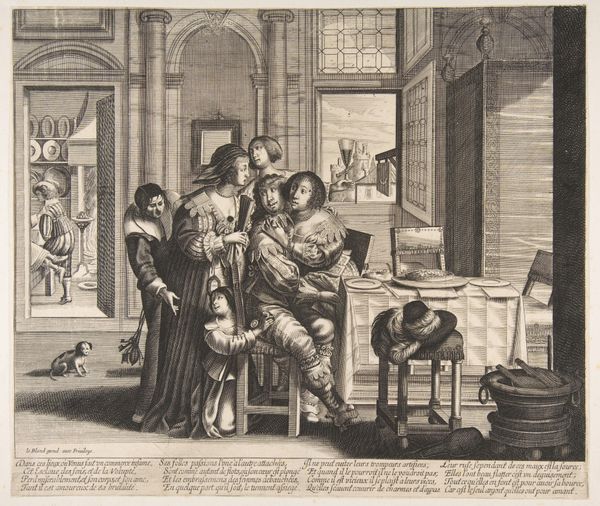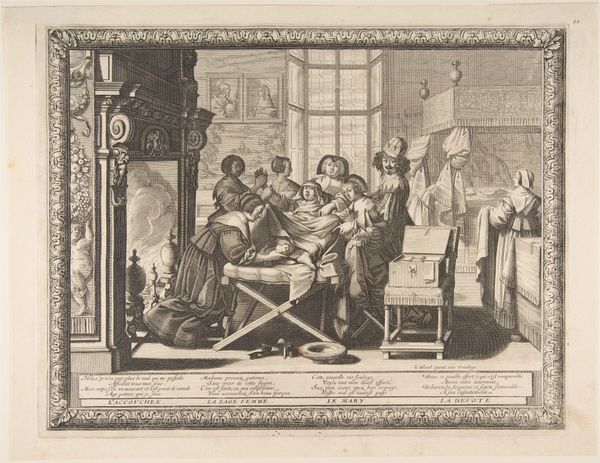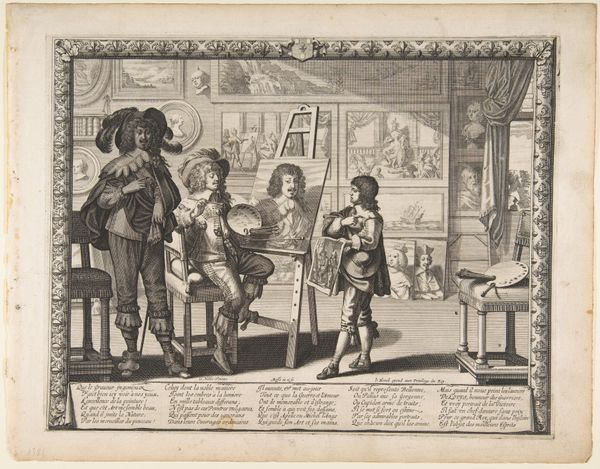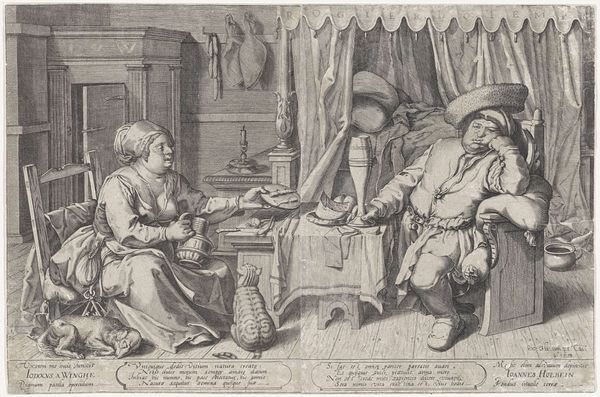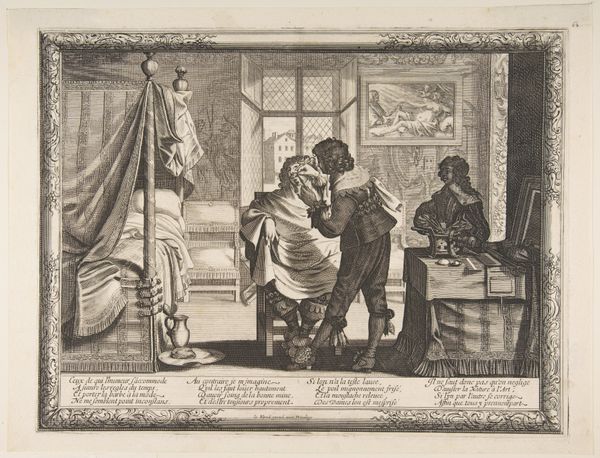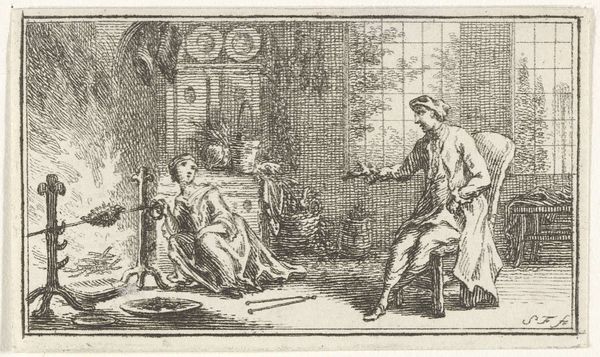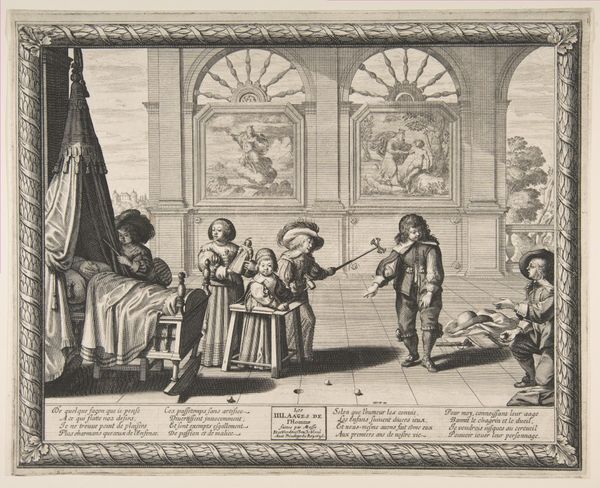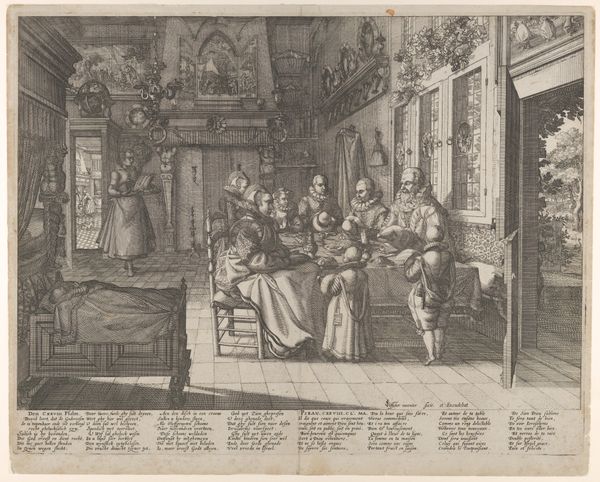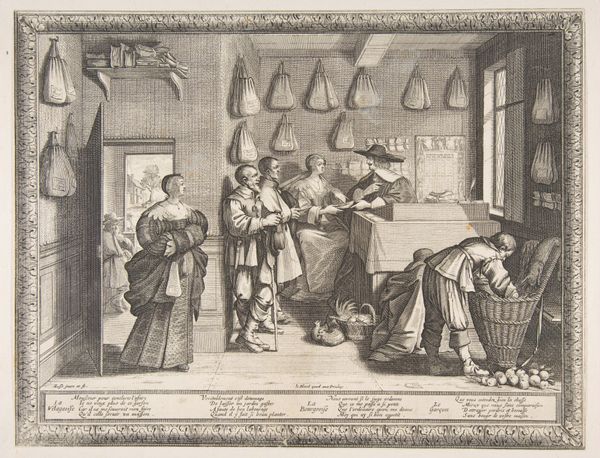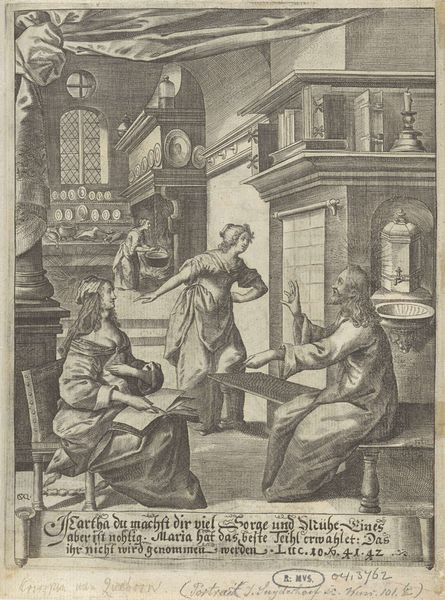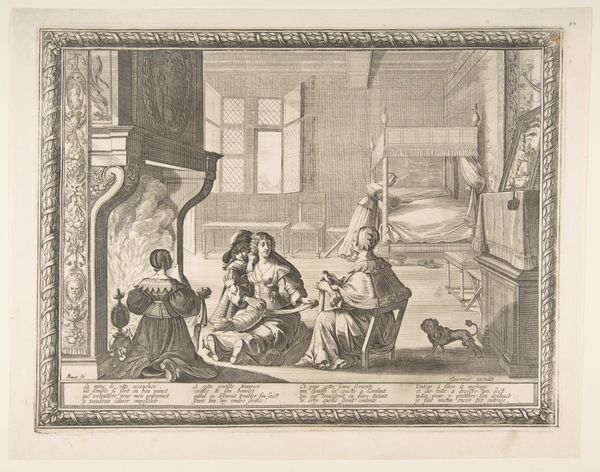
drawing, print, engraving
#
portrait
#
drawing
#
baroque
# print
#
caricature
#
group-portraits
#
men
#
portrait drawing
#
genre-painting
#
history-painting
#
nude
#
engraving
#
erotic-art
Dimensions: Sheet: 10 9/16 × 13 5/16 in. (26.8 × 33.8 cm)
Copyright: Public Domain
Curator: Welcome. We’re looking at Abraham Bosse's "Touch," an engraving from around 1635 to 1638. It's currently part of the Metropolitan Museum of Art's collection. What are your initial thoughts on this interior scene? Editor: It strikes me as…intimate, almost uncomfortably so. There's this very casual eroticism in the couple's interaction juxtaposed with a servant's very visible presence in the background. It makes you wonder about power dynamics, voyeurism. Curator: Indeed. Bosse's work often offers glimpses into the social mores of 17th-century France, particularly the rituals of courtship and the prevailing attitudes towards the senses. "Touch," as part of a series on the five senses, visually articulates a dominant understanding of pleasure. Editor: I see a staged tableau. This isn't raw, uncontrolled passion, but a display of it. Note the intricate details in their clothing, the elaborate furniture—this speaks to wealth and status, doesn't it? Who has access to this type of intimacy, who is excluded? Curator: Absolutely. Bosse was acutely aware of class distinctions, reflecting them in his meticulously rendered interiors and the characters that occupied those spaces. His works are invaluable for understanding the material culture of the French upper classes and how they staged their lives for public consumption. Editor: There is a visual narrative here. The arrangement almost seems deliberately staged—a peek into the bedrooms of the elite that perpetuates inequality. It serves to exclude by presenting such excessive interior displays of wealth. Curator: Furthermore, the framing of the piece—literally, within the image itself, through architectural elements and composition—highlights the sense of viewing a carefully constructed world, which ties into the public role art assumed as an agent for the transmission of power dynamics in imagery. Editor: Thank you. This glimpse into both privilege and its implications challenges viewers to think critically about social access. Curator: I concur, as the careful, considered perspective offered to us encourages this critical reflection upon socio-political structures as represented through intimate artistic glimpses.
Comments
No comments
Be the first to comment and join the conversation on the ultimate creative platform.

